- What is Sanatana Dharma esp. Dharma? What are 2 types of Dharma? Quotes of Thiruvalluvar, Rishi Jamini and Kanada. Why are Hindus always defending their tradition? Hindus need to rediscover the Essence of Sanatana Dharma.
In the vast
tapestry of human spirituality, the threads of Sanatana Dharma, also known as
Hinduism, weave a rich and intricate pattern. It is a tradition that has
endured for millennia, an ancient wisdom that has sustained generations, and a
way of life that has guided countless souls on their spiritual journeys. Yet,
in the modern world, it finds itself at crossroads, beset by misconceptions,
misunderstandings, and the need to defend its very existence.
A
Tragedy of Identity
The plight of
the Hindus, the practitioners of Sanatana Dharma, is a reflection of the times.
They stand on the precipice of history, compelled to defend every facet of
their existence-be it their way of life, customs, dietary practices, religious
and social rituals, holy places, or even the essence of their thought process.
The challenge arises from a world where the dominant narrative is often shaped by exclusive and dogmatic belief systems. In a world of ‘One man - One Book’, the complexities and nuances of a diverse tradition like Sanatana Dharma are often lost or misunderstood. The advocates of ‘free speech’ frequently parrot the agenda of a global network of exclusivist sects.
Defining
Sanatana Dharma
To understand the essence of Sanatana Dharma, we must first grapple with the word ‘Dharma’ itself—a term that defies concise English translation.
While it is often translated as “duty” or “religious duty”, its true meaning goes much deeper. ‘Dharma’ originates from the Sanskrit root “dhr”, signifying “to sustain” or “that which is integral to something”. In this profound tradition, there are two corresponding types of Dharma:
1. Sanatana-dharma: This encompasses duties that recognize a person's spiritual identity as the atman (soul) and are universal, applying to everyone.
2. Varnashrama-dharma: These duties are determined by an individual's material nature and are specific to their circumstances at a given time.
Sanatana-dharma
transcends the temporal and mundane, representing universal and self-evident
laws that stand above the transient belief systems of the world.
dhriyati
lokan anena, dharati lokaṁ va - Dharma, at its core, is the unifying force that binds and sustains all aspects of existence. In essence, it can be defined as ‘that which holds’-holding together:
The existence of
this world,
The diverse
variety of humanity,
The entirety of
creation, from the microcosm to the macrocosm.
It is the eternal divine law set forth by the Supreme Being, a cosmic order that governs all existence. This profound law is the very foundation that upholds and nurtures the entire creation. Embracing Dharma, therefore, entails recognizing this divine law and living in harmony with it. It is through adherence to this law that well-being is bestowed upon human beings. Dharma encompasses not only outward actions but also thoughts and inner contemplations that elevate an individual's character, ultimately ensuring the preservation of all beings.
In essence,
people are sustained and uplifted by the principles of Dharma. It is this
sacred law that guides individuals towards eternal happiness and fulfillment.
Maharshi
Jaimini,
the revered author of the Purvamimamsa, elucidates Dharma as- sa hi niḥśreyasena puruṣaṁ saṁyunaktīti pratijānīmahe
। tadabhidhīyate |
That which the
Vedas indicate as conducive to the highest good.
According to Rishi Kanada, the visionary founder of the
Vaisheshika system of philosophy, Dharma is defined, in his Vaiseshika Sutras,
as that which leads to prosperity in this world (Abhyudaya) and total cessation of suffering while attaining eternal
bliss hereafter (Nihshreyasa)- yato'bhyudayaniḥśreyasasiddhiḥ sa dharmaḥ.
Dharma is the
foundation that sustains progress and welfare for all in this world while
ensuring eternal bliss in the next. It is conveyed in the form of commands,
encompassing both positive directives (vidhi)
and prohibitions (nishedha). Manu,
the ancient sage and lawgiver, consolidates the essence of various definitions
of Dharma.
In its essence,
Dharma encompasses the noble principles of Ahimsa
(non-violence), Satya (truthfulness),
Asteya (not coveting the property of
others), Shaucha (purity), and Indriyanigraha (control of the senses).
These universal dharmas apply to all varnas, transcending boundaries and
uniting humanity in the pursuit of righteousness and spiritual elevation.
Respected Shri S N Goenka, founder of Vipassna Research
Institute, says there is no difference between Dharma and Dhamma. He wrote, “The original Pali term for Buddhism is Dhamma, which, literally, means that which upholds. The Dhamma is that which really is. It is the Doctrine of Reality.”
In book Jaina Darsana
by Munisri Nyayavijayaji, translated in English by Nagin J Shah, author writes in Introduction, “Dharma means good conduct and spiritual discipline. And if one practices Dharma truly, then and then only can one attain ultimate good.” Pg. xxv
The logo of the Supreme Court of India reads, Yata
Dharmastato Jayah - Where there is righteousness and moral
duty (dharma), there is victory (jayah).
In a 2015 interview to Business World, Gurcharan
Das, author and former head of Proctor and Gamble India said, “Dharma is a frustrating, almost untranslatable word. Duty, goodness, justice, and law have something to do with it, but they all fall short. Dharma is chiefly concerned with doing the right thing, both in the private and the public life. Dharma provides the underlying norms of society, creating obligations for citizens and rulers, and it thus brings a degree of coherence to our everyday life. What makes dharma different from notions of morality in the other traditions, such as Christianity, is that it does not seek moral perfection.”
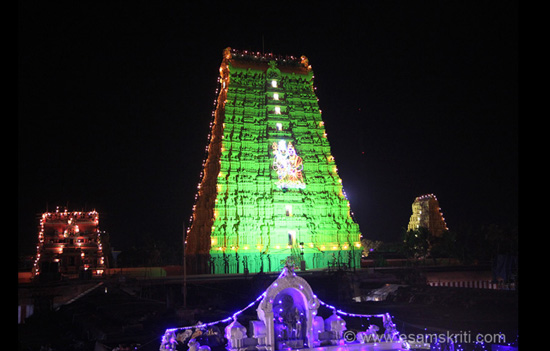 Shiva-Shakti Rameshwaram Mandir. 2016.
Shiva-Shakti Rameshwaram Mandir. 2016.
Sanatana
Dharma: Beyond Religion
While the term "Dharma" is sometimes equated with "religion," it falls short of capturing the depth and breadth of Sanatana Dharma. In reality, Sanatana Dharma is more than just a religion; it is a complete civilization that has thrived in India for countless ages.
Its origins are
believed to be beyond human history, rooted in divine revelation passed down
through the ages in the Vedas, the most ancient of scriptures. Sanatana Dharma
holds that spiritual truths are not confined to a single historical figure or
text but have been divinely revealed and transmitted through a timeless
lineage.
Many have taken a stance that words ‘Dharma’ or ‘Sanatana Dharma’ in Bharatiya languages, particularly Tamil, are ‘foreign’ and have no roots in Tamil Culture. This propaganda is propelled with the aim of disassociating the linguistic group from the broader Dharmic family.
However, it is
essential to note that there is a substantial body of evidence within ancient
Tamil literature, including the revered Tirukkural
that not only acknowledges but also upholds the validity of Vedic traditions.
Thiruvalluvar, the celebrated author of the Tirukkural, not only recognizes the sanctity of the Vedas but also attributes the greatness of individuals to their adherence to Vedic principles. He eloquently states, "The glory of Fulfilled texts uttered by Great people is shown by the Vedas." This assertion underscores the profound influence of Vedic wisdom on the spiritual and ethical fabric of Tamil culture.
“Niraimohi mandhar Perumai perumai nilathu Marai mozhi kattividum” Neethar perumai, 8th Kural
For those who might question the use of the term "Marai" to refer to the Vedas in contexts beyond Tamil Bhakti Literature, it's worth noting that Tholkappiyam, the authoritative text of Tamil Grammar, also corroborates this terminology. Tholkappiyam identifies mantras as components of the Vedas, further reinforcing the deep-rooted connection between Tamil literary heritage and Vedic traditions.
“Niraimozhi Mandhar anaiyirkilarndha Maraimozhi dhane
Mandiram Enba”
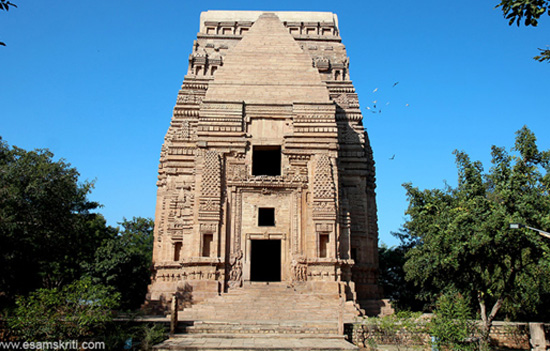 Teli ka Mandir, Gwalior Fort. 2020.
Teli ka Mandir, Gwalior Fort. 2020.
The
Psychology of Surrender
So, why do
Hindus often find themselves in a position of surrender, constantly defending
their tradition? There are several factors at play:
1. Quest for
Inclusion: Some Hindus seek admission to the exclusive club of monotheistic
religions like Christianity and Islam. They attempt to convince the adherents
of these religions that the Rigveda, the earliest Hindu scripture, supports the
same core principles as monotheism, albeit through a different lens.
2. Apologetic Tone: Modern Hindus often present Hinduism as an alternative expression of the same truths found in monotheistic faiths, essentially saying, "Our way is just a different way to state your truths." This approach, marked by apology and defense, fails to capture the essence of Sanatana Dharma.
3. Borrowed Concepts: Hinduism's spokespersons sometimes borrow concepts and terminology from monotheism when presenting their faith. This approach leads to a supine surrender to the language and narratives of other religions, diluting the essence of Sanatana Dharma.
The Hindu mind of today is a product of colonial education.
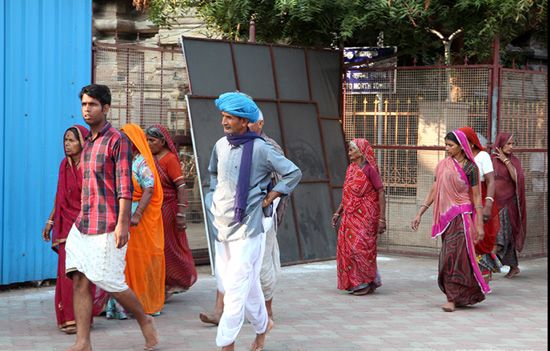 Devotees from Rajasthan at Meenakshi Mandir, Madurai. 2016.
Devotees from Rajasthan at Meenakshi Mandir, Madurai. 2016.
Sarva-dharma
Samabhava is a Misunderstood Slogan
A common assertion in support of this approach is the slogan "sarva-dharma samabhãva," often cited from the Rigveda (1.164.46) – ‘Ekam sad viprãh bahudhã vadanti’, which translates to “It is of One Existence that the wise ones speak in diverse ways”.
However, a closer examination reveals that this assertion represents only a fraction of the complete verse, which is part of a larger context. The neglected three-fourths of the verse is as significant, if not more so, than the cited portion.
Indram mitram varuNam agnim ãhuh,
atho divyah sa suparNo garutmãn,
ekam sad viprãh bahudhã vadanti,
agnim yamam mãtarivãnam ãhuh.
(They hail Him as Indra, as Mitra, as Varun, as Agni, also as that divine and noble-winged Garutmãn. It is of One Existence that the wise ones speak in diverse ways, whether as Agni, or as Yama, or as Mãtarivãn.)
The verse underscores the importance of considering the entire mantra to grasp its intended meaning accurately.
Rediscovering
the Essence of Sanatana Dharma
The path to
shedding the psychological shackles that bind Hindus lies in reawakening to the
sublime spirituality of their own Sanatana Dharma. It entails evaluating other
religions and cultures based on the pristine principles of this ancient
tradition.
Sanatana Dharma
fundamentally rejects the notion of spiritual truth or moral virtue being the
exclusive domain of any historical figure, no matter how revered. Instead, it encourages each individual to be their own seeker,
their own prophet. One must personally discover spiritual truths for
them to hold meaning and validity in their life. Scriptures and spiritual
teachers can serve as guides, but true realization comes from within.
The essence of
Sanatana Dharma lies in self-exploration, self-purification, and
self-transcendence. It beckons individuals to embark on an inner voyage of
discovery, to see spiritual truths in myriad forms, and to recognize the divine
in all aspects of existence.
Rameshwar Mishra
wrote in ThePrint, “Sanatan Dharma is not a government order. It is an investigation of truth or reflection. It delves into how humans can attain happiness and why they become unhappy.”
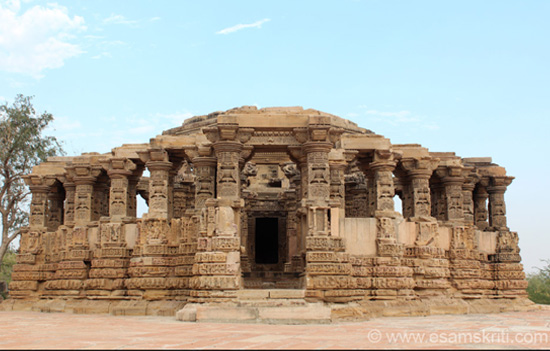 Kiradu Temples, Barmer, Rajasthan. 2013.
Kiradu Temples, Barmer, Rajasthan. 2013.
A
Civilization Beyond Religion
Sanatana Dharma,
known today as Hindu Dharma, is not merely a religion; it is a civilization
that has flourished for ages untold. Yet, it faces
the challenge of being perceived through non-Hindu lenses, often perpetuating
colonial-era distortions.
Hindus today
grapple with a lack of clarity regarding their identity and beliefs. The
absence of a unified definition of Hinduism has led to confusion among
adherents and outsiders alike. Some perceive it as a collection of disparate
sects and cults with little in common, while others view it as a conglomeration
of various religious traditions without a cohesive teaching.
Sanatana Dharma,
as the universal tradition, has the potential to offer profound insights into
contemporary issues. However, the failure to articulate a coherent Hindu
perspective on pressing global matters stems from the absence of a clear
definition and understanding of Hinduism itself.
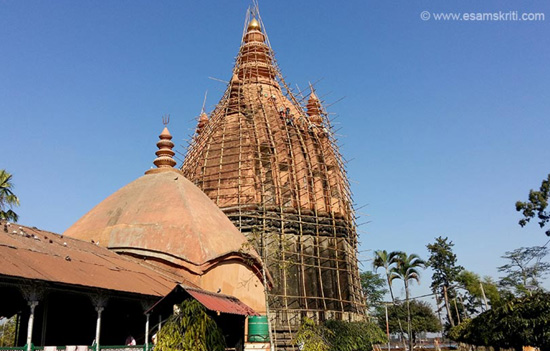 Shiv Mandir, Sivasagar, Assam. 2017.
Shiv Mandir, Sivasagar, Assam. 2017.
The
Cosmic Vision of Sanatana Dharma
At the heart of
Sanatana Dharma lies a cosmic vision of life-a vision that transcends
individual beliefs and embraces the interconnectedness of all existence. It
teaches that humans are part of a vast web of interconnections, both seen and
unseen, and that they owe their sustenance and being to the myriad forces of
the universe.
This cosmic view
elevates humanity by making individuals aware of their position in the grand
tapestry of existence. It fosters an understanding of life as a yajna-an interchange between different forms, a dance of transformation. It is a worldview
that grounds and elevates simultaneously, a unique facet of Sanatana Dharma.
In this journey
of rediscovery, Hindus have the opportunity to unravel the profound wisdom of
their tradition, embracing its true essence beyond the superficial labels and
misconceptions that have obscured it for far too long.
Sanatana Dharma beckons, not as a religion alone, but as a civilization, a philosophy, and a way of life—an eternal tradition that transcends time and space, offering profound insights for the modern world.
This article is inspired by the writings
of Sri Sitaram Goel and Sri Ram Swarup. Pranams.
To
read all articles by author
Author Dr Ketu Ramachandrasekhar is Program Manager at Bharatiya Samskriti Trust, a Non-Profitable Organisation dedicated towards the dissemination of Indic Knowledge Systems and resurgence of the Oldest Living Cultural way of life i.e. Sanatana Dharma. He has his Doctorate in Indian Epistemology and was selected as a Fellow from hundred young scholars across India for Studies in Neuro Aesthetics and Indian Rhetoric by Ministry of Culture, GOI. He was a part of Academic Team of scholars across Europe on discussion of Natya Texts. His expertise in Shaiva Pratyabhijna School is well recognised by scholars of Kashmir Shaivism and he has been a regular contributor to their Journals on the works and contributions of Acharya Abhinavagupta. He has several research articles and books to his credit which includes a detailed study of Abhinayadarpana of Nandikeshvara, Devi Mahatmya and others. His advice is also sought in matters relating to prayoga aspect of Tantra Shastra by established centers of Shakti worship like Kollur and Kanchipura.
Also
read
1. Sanatan
Dharma is the way if the world is to be saved
2. Indian
Constitution follows the Sanatan Dharma principle
3. Comparing
Indic vs Abrahamic faiths is a good way to understand Sanatan Dharma
4. Kashi
Tamil Sangam
5. Why
Hindus must stop being defensive about caste
6. What is India